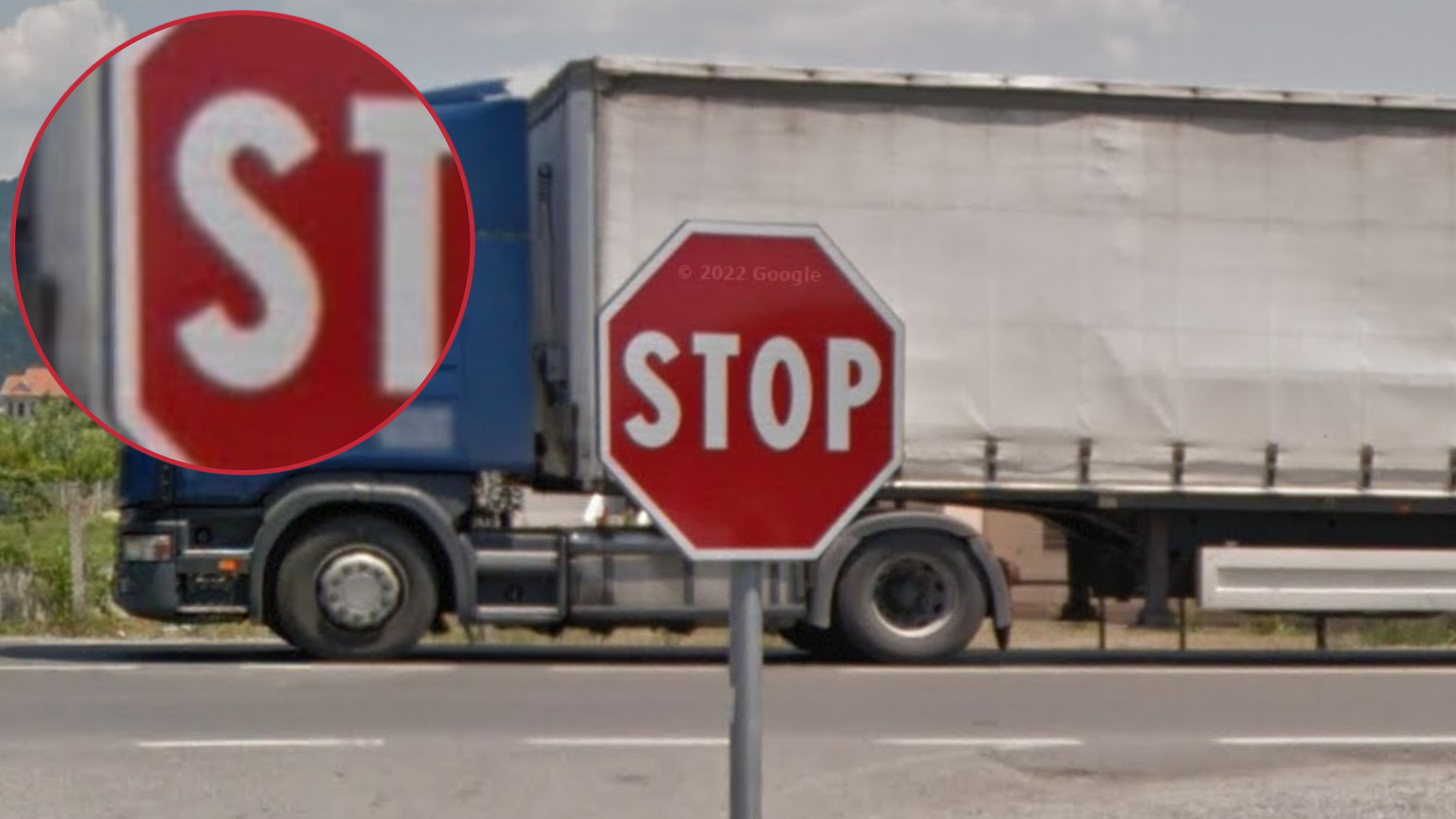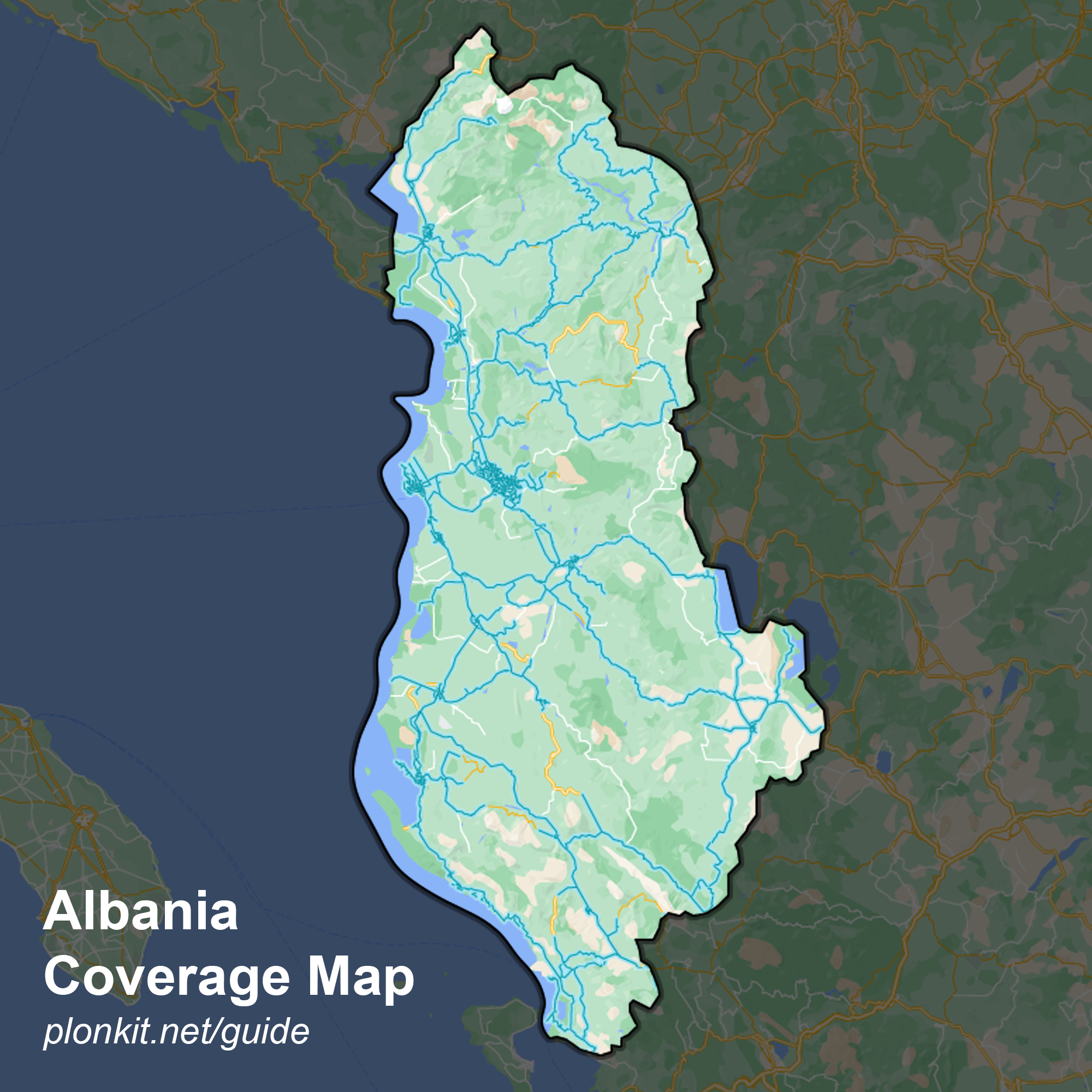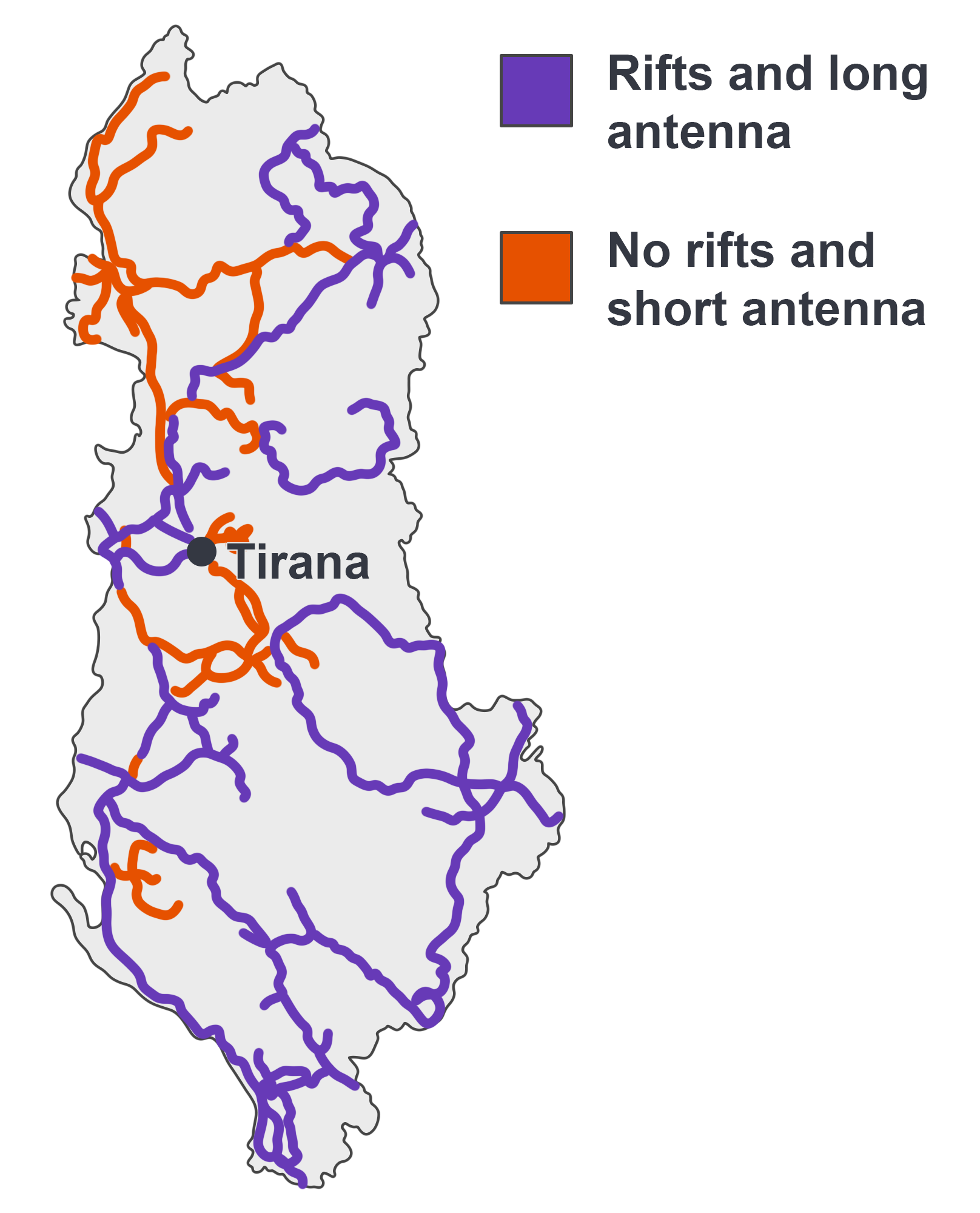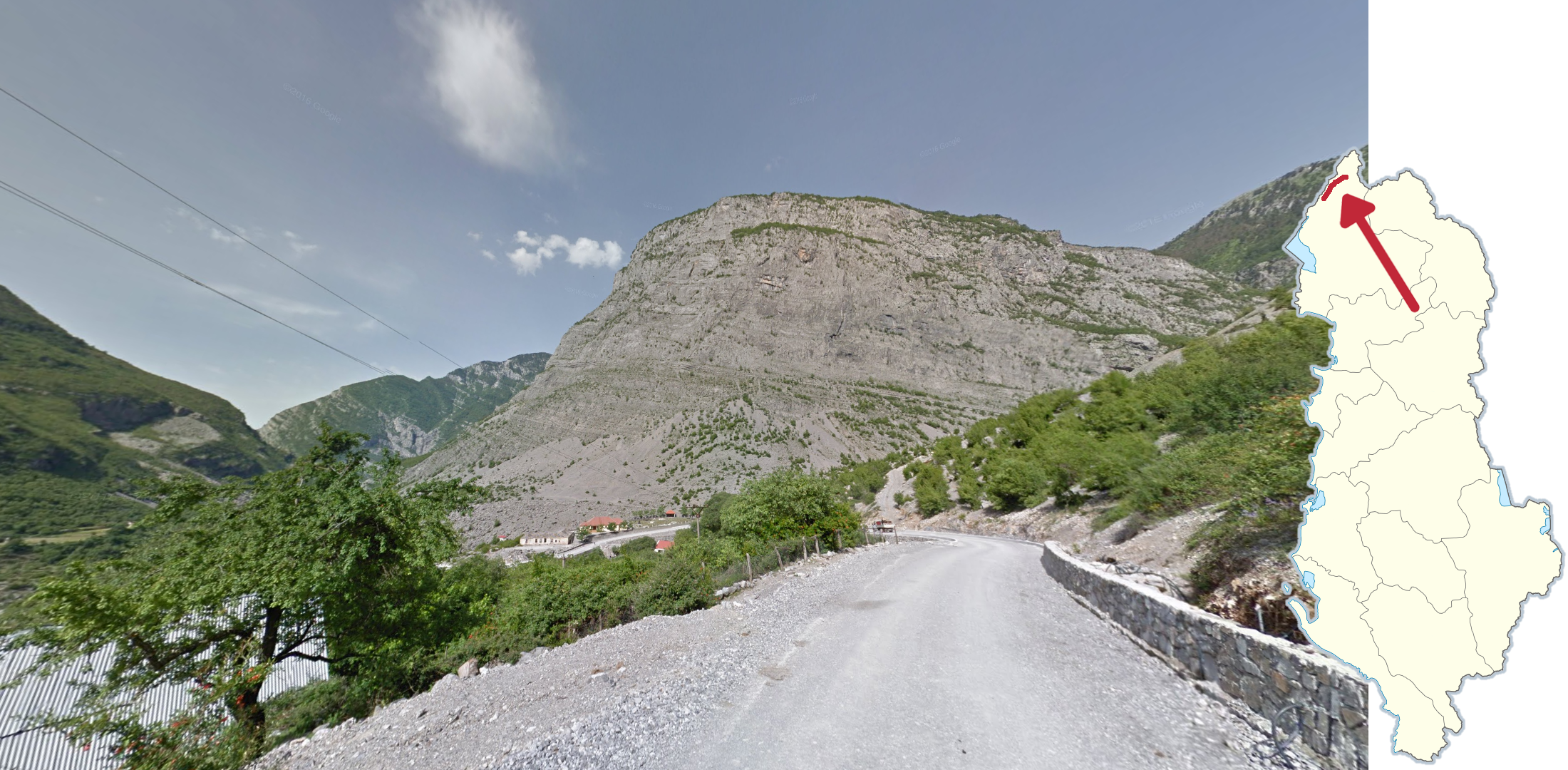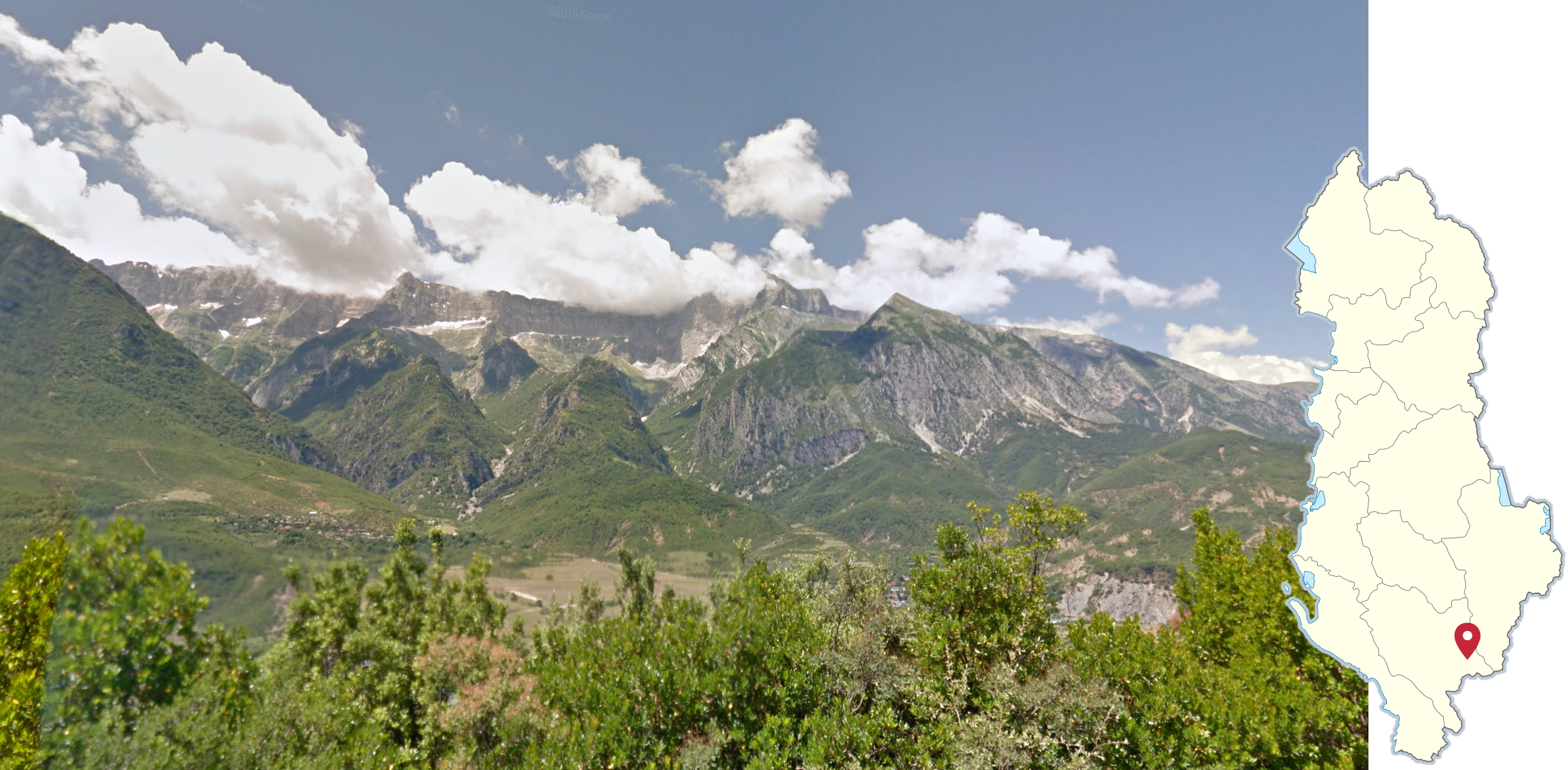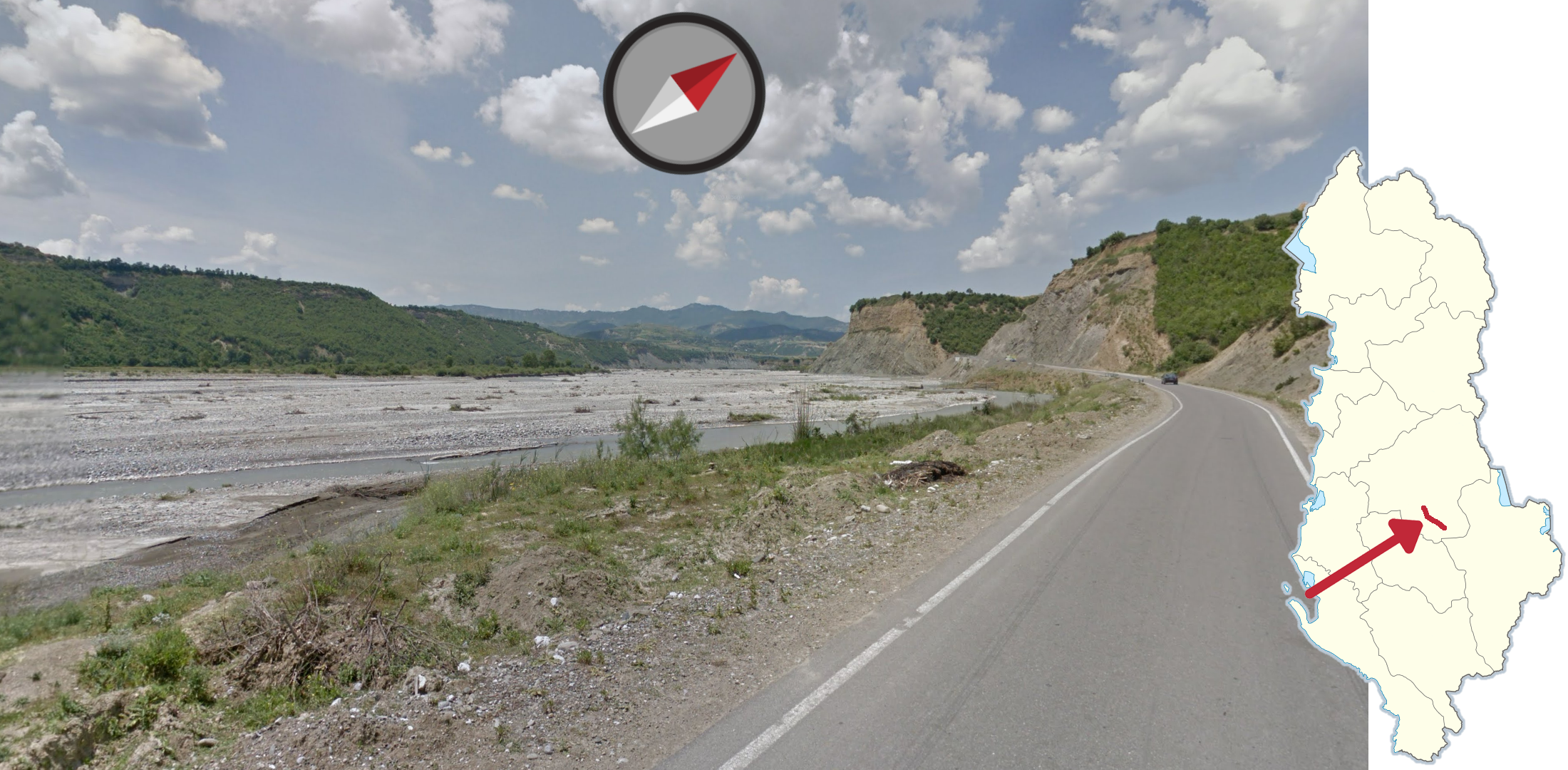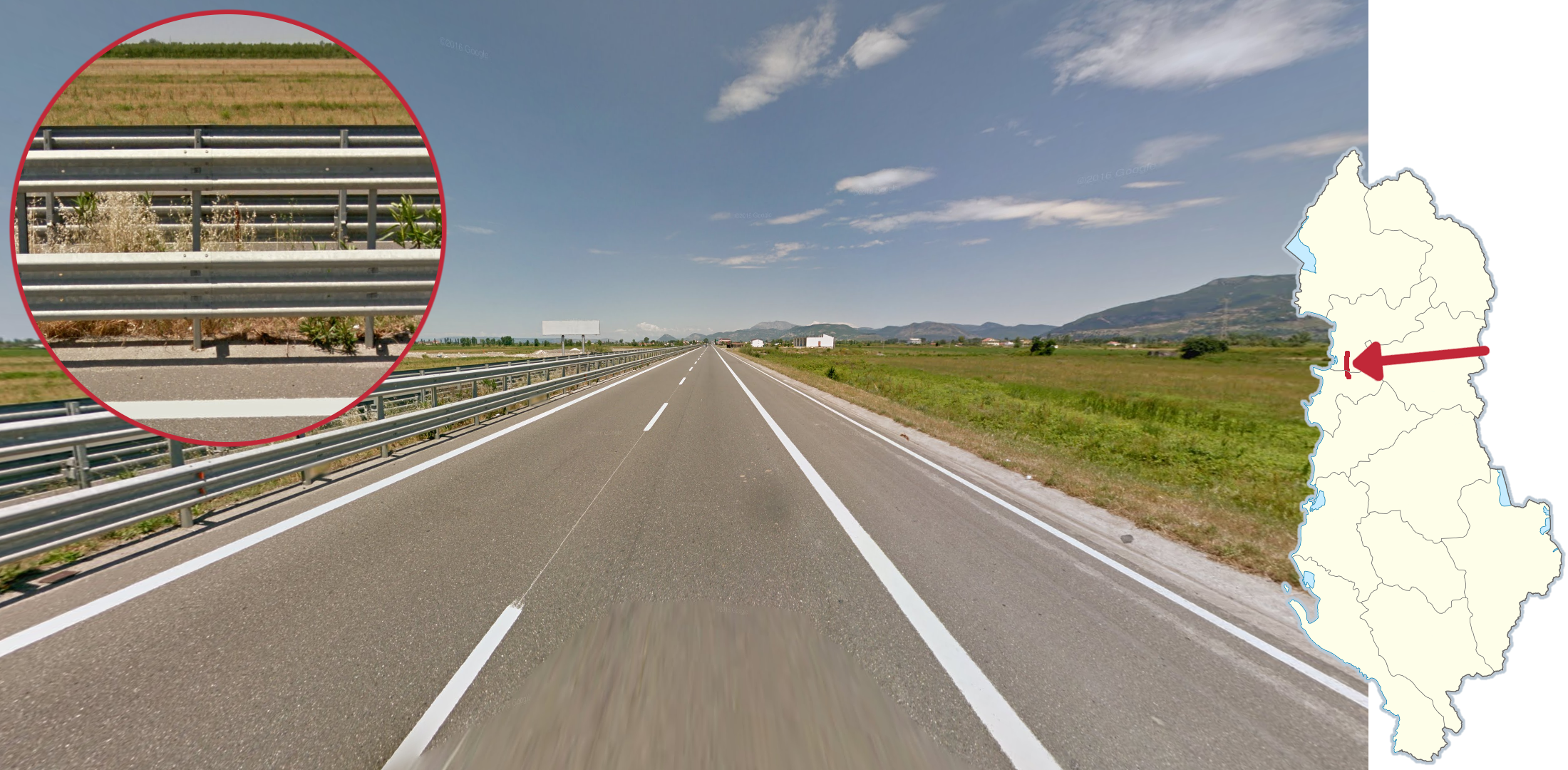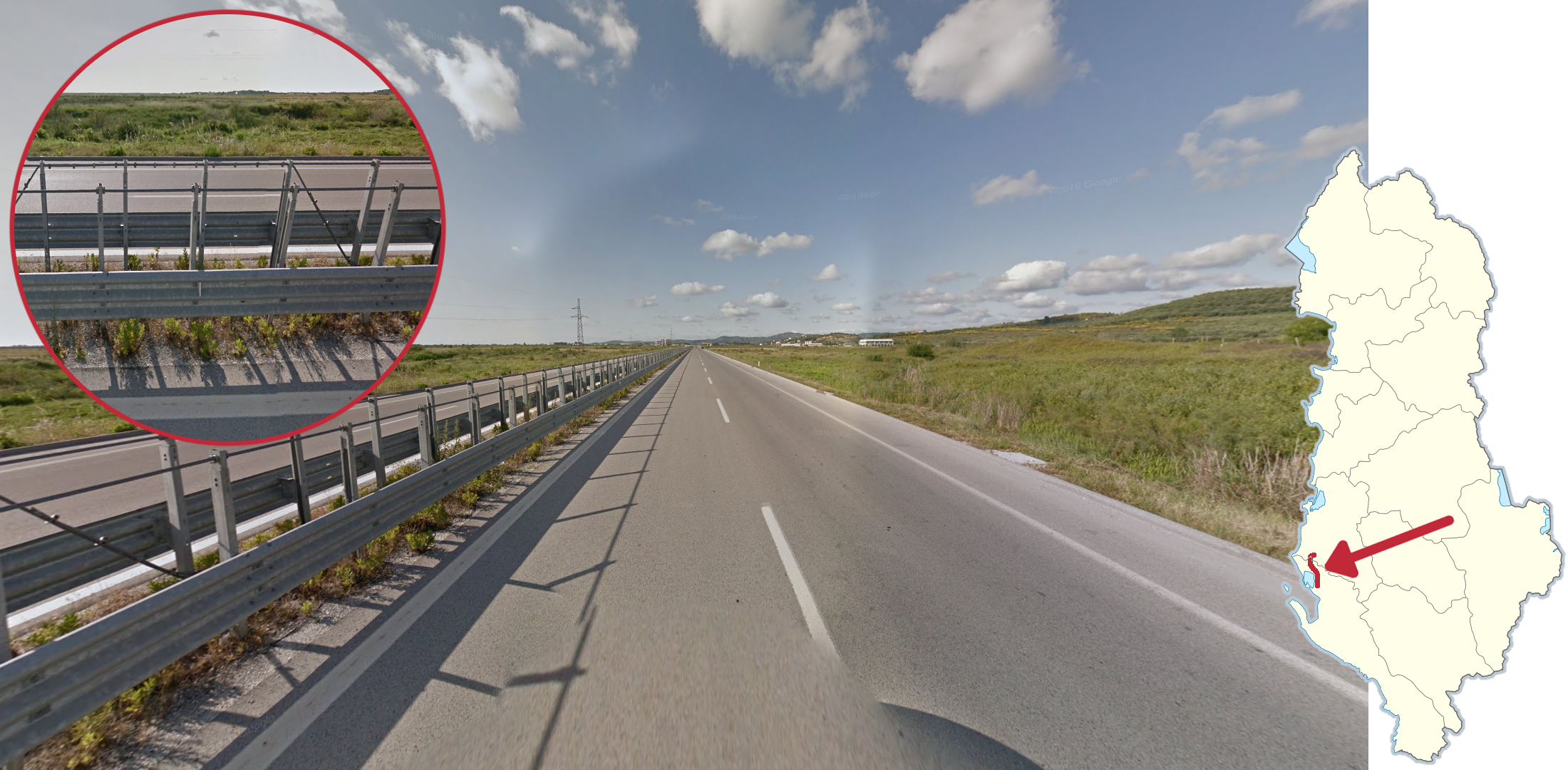
Albania
Albanian licence plates either have blue strips on both sides or a single red strip on the left side.
NOTE: Albania is the only European country with red on the left side of the licence plate. Furthermore, Italian licence plates also have blue strips on both sides, however Italian front plates are distinctly shorter.
The “S” on Albanian stop signs feature a distinct shape; the ends of the S are quite short and have the same angle as the middle, rather than being vertical. This is also sometimes seen on directional signs.
NOTE: Italian stops signs and directional signs have the same feature.
The numbers on speed signs are written in a bold font.
NOTE: The font is much thinner on speed signs in Montenegro.
Coverage in Albania is limited. Generally only the larger towns have extensive side-road coverage.
Note that while the coverage is limited, a lot of it still appears to be very rural. It is not just on big main roads or urban areas.
You can click on the image to enlarge it, or use this site to study the official coverage in detail.
There are two types of car and camera meta in Albania:
Coverage where the Google car has a long antenna and you can see rifts in the sky.
Coverage where the Google car has a short antenna and there are no rifts visible.
You can click on the image to enlarge it. You can also use this Maps layer to look at the coverage in more detail (credits to icraig1205).
Albania is generally a very mountainous country. This map shows the elevation and relief.
Low-lying areas are mostly concentrated in the west, around Shkodër, Tirana and Vlorë. This part of the country is characterised by agricultural flatlands and low, undulating hills. Note that the highland plateau around Korçë in the southeast is also very flat.
The highest mountains can be found in the far north and the far south. In places, these mountains can have an almost alpine look.
You can click on the image to enlarge it.
Yellow centre lines
Divided highways
The E851 is the only divided road with a basic double guardrail that goes directly through mountains.
NOTE: A section of the A3 goes through the mountains but is either divided by a double guardrail with a fence above, or with concrete blocks.
Cities
GeoGuessr’s own official Albania map is not very good, for a variety of reasons. Plonk It recommends the following maps instead:
A Balanced Albania (map link) - 23k arbitrarily generated locations. Balanced, but not pinpointable.
IntersectionGuessr - Albania (map link) - Pinpointable, but not very balanced. A lot of the locations will be in or near the big urban areas. It does have the advantage of being a good map for moving 25k games however.
In addition, here are some resources to help you practise Albania:
Plonk It Albania (map link) - This map contains locations for practising each meta in the Plonk It Albania guide from step 2 to 3.









